-
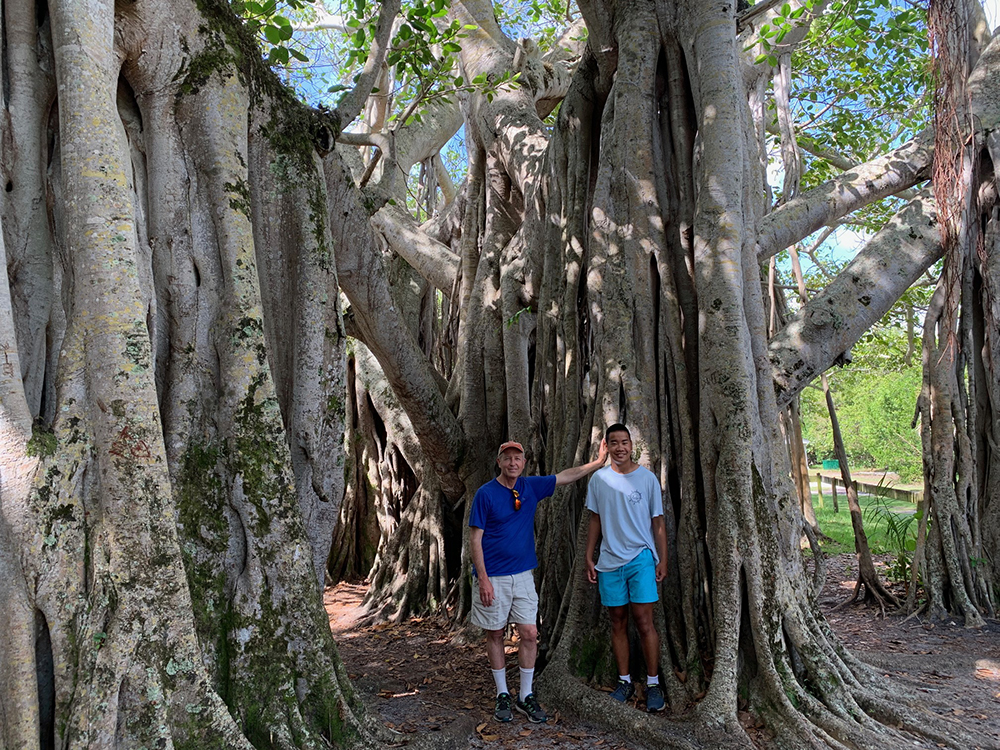
John Prescott and son Luke visit the Banyan Tree
Hugh Taylor Birch State Park in Ft. Lauderdale, Florida
-
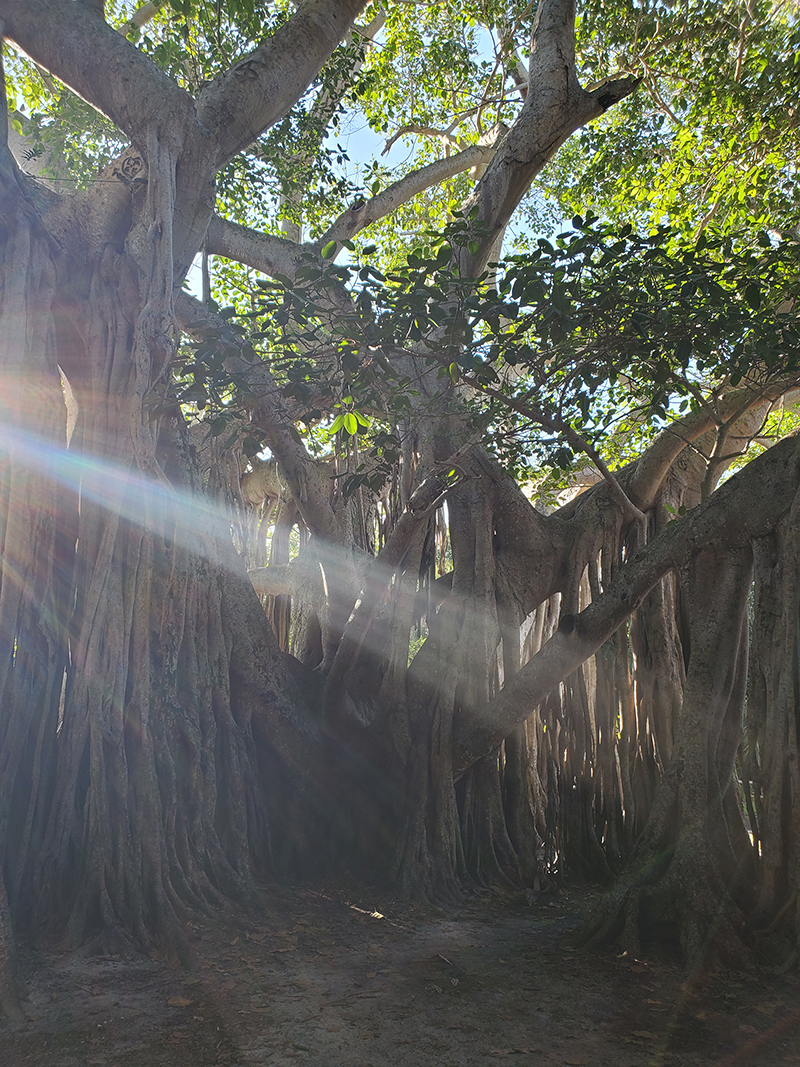
Banyan Tree in Hugh Taylor Birch State Park
-
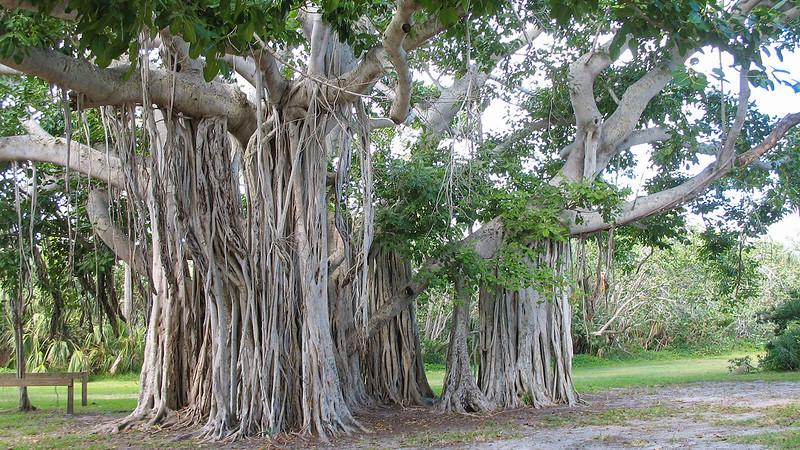
Banyan Tree in Hugh Taylor Birch State Park, Ft. Lauderdale, Florida
86th Annual Missouri Music Educators Association In-Service Workshop / Conference
MSU Wind Ensemble Program
Selection |
Guest Conductor/Artist |
Composer |
|---|---|---|
| Summon the Heroes (1996/2000) |
John Williams (b. 1932) |
|
|
Concerto for Soprano Saxophone (2007) I Prelude |
Dr. Matthew Tracy, Soloist |
John Mackey (b. 1973) |
| Adoration (1951/2022) | Dr. Matthew Boswell, Guest Conductor |
Florence Beatrice Price (1887-1953) |
| The Banyan Tree (2023) | John Prescott (b. 1959) |



Program notes
Summon the Heroes
Few modern composers of classical music have entered the fabric of American culture quite like John Williams (b. 1932). Trained as a pianist from a young age, Williams served in the US Air Force conducting and writing for military bands before studying piano at Juilliard and ultimately composition at University of California Los Angeles. Despite a consistent output of classical works across his career, Williams is most recognized today for his television and film scores. Working mostly in television in the 1960s, it was in the 1970s that his film scores came to prominence in movies like The Cowboys (1972) featuring John Wayne and Superman (1978) featuring Christopher Reeve. The 1970s also saw the beginning of long collaborations with acclaimed directors Steven Spielberg and George Lucas whose films helped propel Williams to becoming a cultural icon.
With Spielberg, Williams scored Jaws (1975), Close Encounters of a Third Kind (1977), Raiders of the Lost Ark (1981), E.T. the Extra-Terrestrial (1982), Jurassic Park (1993), Schindler’s List (1993), Saving Private Ryan (1998), The Terminal (2004), Lincoln (2012), and many others. With Lucas, Williams first scored Star Wars (1977), followed by The Empire Strikes Back (1980), The Return of the Jedi (1983), and every Skywalker-saga film that followed ending with The Last Jedi (2017) and The Rise of Skywalker (2019). Over the course of Williams’ long film career he has earned an incredible 53 Academy Award nominations resulting in five Oscar-wins. The only individual to receive more nominations in the history of the Academy was Walt Disney. If moviegoers the world over imagine interstellar space battles, escapes from ancient ruins, journeys on a magic broomstick, or majestic dinosaurs roaming wide open plains it will likely be John Williams’ iconic themes underscoring their reveries!
This afternoon’s work, Summon the Heroes (1996) is emblematic of Williams’ ceremonial music. In 1984 the United States hosted the Summer Olympic Games in Los Angeles and the organizing committee commissioned Williams—a longtime Los Angeles resident at the height of popularity at the time—to compose the official theme music of the games. The work ultimately became known as “Olympic Fanfare and Theme” and was a smash hit. When the Olympic Games returned to America for the 1996 Summer Games in Atlanta, Williams was again asked to compose the theme music; Summon the Heroes was the result. Very much related to its 1984 counterpart, Summon the Heroes opens with a heroic brass “Fanfare” punctuated with intense percussion. What follows is a somber, yet hopeful “Prologue” featuring an iconic trumpet solo which sets the stage for the start of the games in “Flags.” This section features quintessential John Williams writing: long flowing melodies, lush harmonies, and driving rhythms—all punctuated with twinkling flourishes in the winds and brass. After “The Contest,” a section featuring competing ideas playing against each other, the trombones and percussion herald the “Parade” which brings the work to a close. The trumpet solo material returns in a glorious full-ensemble treatment as a symphonic march, as if humanity itself is on the move—a perfect end to music celebrating the Olympic Games. Be sure to listen for this iconic music during NBC’s television coverage of the 2024 Summer Games in Paris this coming July.
Concerto for Soprano Sax and Wind Ensemble
John Mackey (b. 1973) approached music composition in an unusual way. Most unusual, however, is that Mackey never learned to play any traditional musical instrument—since about the age of 11, the computer became his “instrument.” Using the early music software of the 1980s on both an Apple IIe and Commodore 64 home computers, Mackey both transcribed the works of the great masters like Bach, Barber, or Bernstein and started composing his own works (some of which can be heard online on his blog). The limitations of those computers played into Mackey’s favor as a developing composer. When the computer can only synthesize three notes simultaneously, the composer must take great care in choosing which ones to include!
Mackey ultimately studied music composition at both the Cleveland Institute of Music (BFA, 1995) and the Juilliard School of Music (MM, 1997). At Juilliard he studied with celebrated American composer John Corigliano along with a group of colleagues who all went on to become influential composers: Eric Whitacre, Steven Bryant, and Jonathan Newman. Mackey’s first work for wind ensemble, Redline Tango (2004), was a massive success winning both the American Bandmasters Association’s Ostwald Award and the Walter Beeler Memorial Composition Prize. This success propelled Mackey to the forefront of wind ensemble composition leading to commissions, performances, and residencies with wind ensembles across the world.
The Concerto for Soprano Sax and Wind Ensemble (2007) was premiered by the Dallas Winds and Mackey drew inspiration for the piece from the saxophone itself. Each of the concerto’s interior movements reflect the materials used in constructing the instrument; Felt, Metal, and Wood; and each movement plays on the saxophone's diverse uses in music today. This afternoon’s performance will feature the opening Prelude—which foreshadows the material used in the subsequent movements—and the closing Finale. The Finale is unique in that it opens with a direct quotation of John Corigliano’s Clarinet Concerto which is one of Mackey’s favorite pieces, included here as an homage to his teacher. All five movements overflow with virtuosity for both the ensemble and the soloist. We are proud to feature Missouri State’s new Saxophone Professor, Dr. Matthew Tracy.
Adoration
Born in Little Rock, Arkansas in 1887, Florence Beatrice Price was an exceptional and prolific composer whose work has only recently been rediscovered, recognized for its quality, and begun to enter the standard repertory of American classical music. She studied piano and composition at the New England Conservatory starting at the age of 14 and received an artist diploma in organ with a teaching certificate in 1906. Price returned to the South to teach in both Little Rock and at Clark Atlanta University in Georgia. Fleeing racial violence and oppression in 1927, Price’s family, along with many other African Americans, moved north during what became known as the Great Migration. Settling in Chicago, Price immersed herself in the musical culture of her new home and studied with the composition teachers available at the Windy City’s many universities.
It was during the 1930s that Price started receiving widespread acclaim for her symphonic compositions. In 1932 she submitted her first symphony, Symphony in E Minor, to the Wanamaker Foundation Awards and won first prize. The symphony was subsequently performed by the Chicago Symphony Orchestra in early 1933 making Price the first African American woman to have an orchestral work performed by a major American orchestra. Her compositional output ultimately included four symphonies, extended works for orchestra, three piano concertos, two violin concertos, chamber music, art songs, spiritual arrangements, and solo works for both piano and organ. Yet after her death in 1953 the changing musical culture of America ostensibly left Price’s work behind. It was only at the turn of the 21st century as efforts to diversify classical music grew that her works started to receive more performance.
Today’s work, Adoration (1951), was originally written for organ. Though Price’s music reflects the Neo-Romantic style of many classical music composers of her era, her music also shows the influence of her own cultural heritage. The songlike melodic material and simple ABA structure of Adoration seemingly harken back to a previous folk song or spiritual even though the melodic material is completely original. This transcription was prepared by Dr. Cheldon Williams who currently serves as the Associate Director of Bands at the University of West Virginia. Dr. Williams states that his “goal in transcribing this piece [was] to grant performers exposure to Price’s story and the gift of performing her music outside its intended medium.”
The Banyan Tree
This afternoon we are happy to be presenting the World Premiere performance of John Prescott’s new work The Banyan Tree. Prescott (b. 1959) hails from the Sunshine State and studied composition at the University of Kansas (BM, DMA) and the Florida State University (MM). Since 1986, Dr. Prescott has been on the faculty of Missouri State teaching music theory, composition, and serving as Graduate Coordinator and Department Chair. He will be retiring at the conclusion of this academic year and we present today’s performance with gratitude for his years of service to the faculty, staff, and students of MSU as well as band students everywhere who have played his music. Prescott provided the following program note:
The Banyan is a variety of Ficus that can spread out indefinitely by dropping auxiliary roots from its branches. Over time, banyans can occupy large amounts of space—sometimes up to nearly an acre of land. Multiple world cultures assign spiritual significance to banyans, and there are spectacular examples of them in tropical latitudes from India to Southeast Asia. The specific banyan referenced in this composition lives in Hugh Taylor Birch State Park in Fort Lauderdale, Florida and its age is estimated to be about 150 years. I have known this tree since I was a small child, and I go back and visit it whenever I can.
The song of the Spot-breasted Oriole is imitated by several instruments in different parts of this piece. This bird song is distinctive due to its repeated pattern of changing pitches, all of which are bent in a descending direction. A field recording of the Oriole’s song, which I collected in 2021, can be heard near the end.
The design of The Banyan Tree makes use of frequent alternation of busy, frenetic music with that which is more sustained, relaxed and introspective—an allegory having to do with our modern lives. It is structured in nine distinct sections with the following names:
- Fanfare
- Spot-breasted Oriole
- Megalopolis 1
- Ultramarine blue
- Busylife
- Return of the Orioles
- Megalopolis 2
- Great Achievements
- The Banyan
It is important that we humans find ways to achieve balance between the frantic nature of our society’s expectations and the more reflective, introspective nature of the soul. Our electronic devices seemingly require us to move and react at the speed of light, but we are meant to do so at the speed of life. Even when our busy lives result in great achievements, a banyan remains a welcome refuge. The spirit of the banyan tree and the song of the Spot-breasted Oriole infuse this music and give it a sense of stability amid this frenetic world. I invite you to allow the tree to work its magic on you for a while.
Notes on the program written and compiled by Matthew Boswell.
Wind Ensemble Personnel
Today's performance would not be possible without the dedication of Missouri music educators. We are proud that the Wind Ensemble membership is composed of 75% Missouri high school graduates.
-

Flutes, Clarinets, Oboe
-
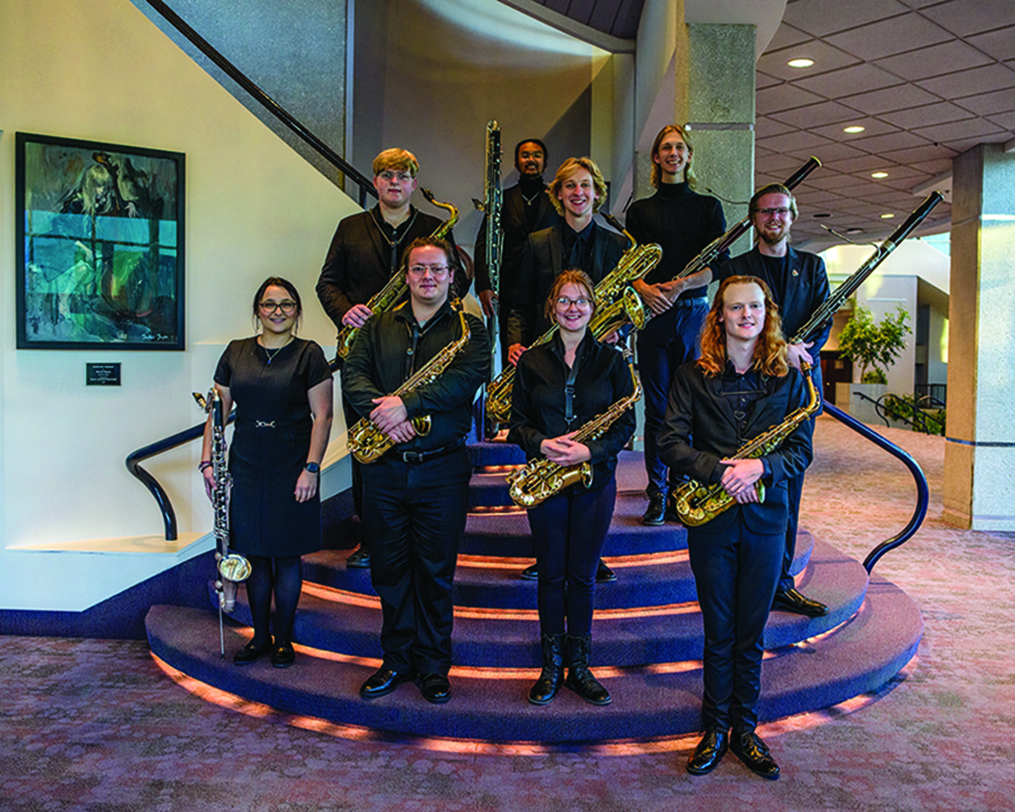
Saxophones, Bassoons, Bass Clarinet, Contra Bass Clarinet
-
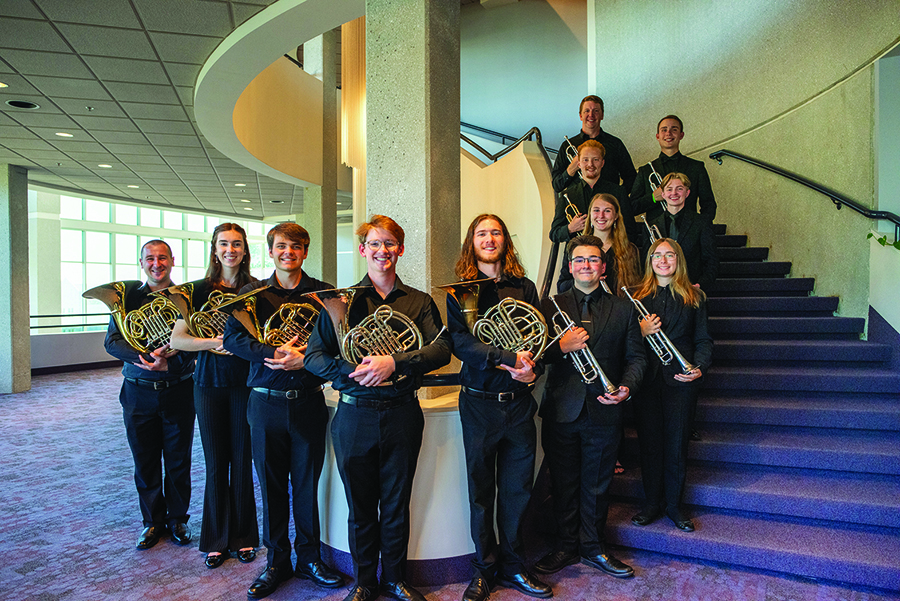
Trumpets, Horns
-
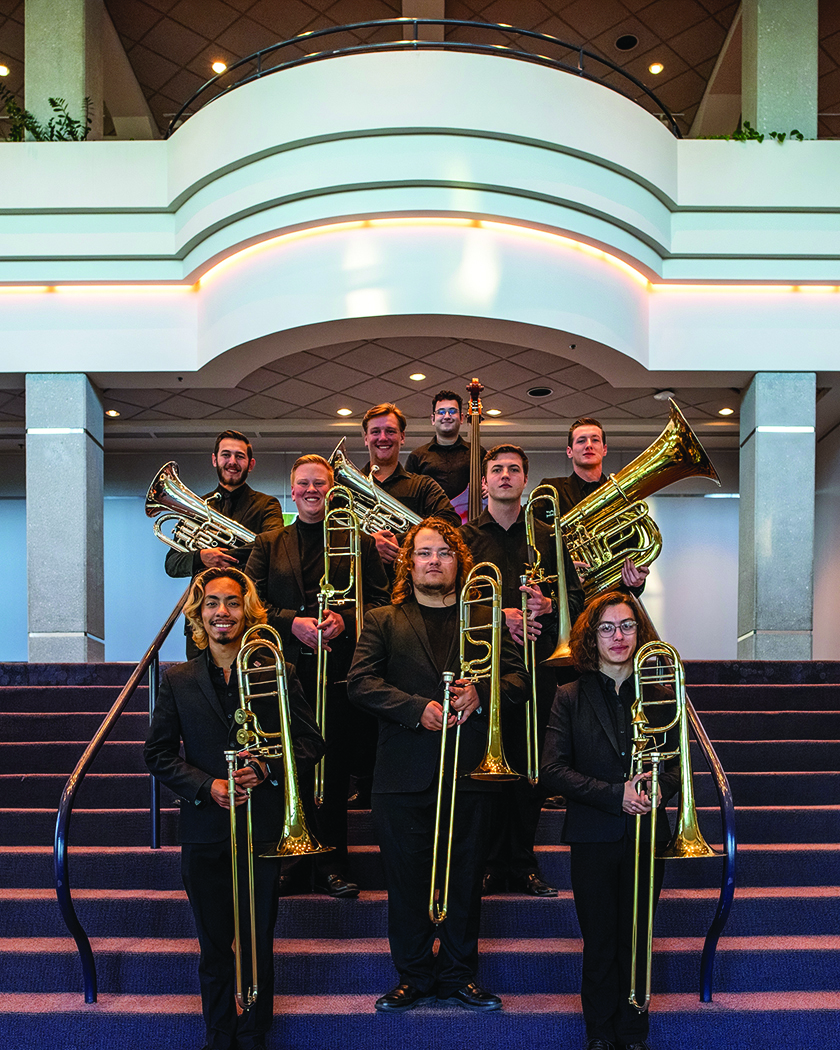
Trombones, Euphoniums, Tuba, String Bass
-
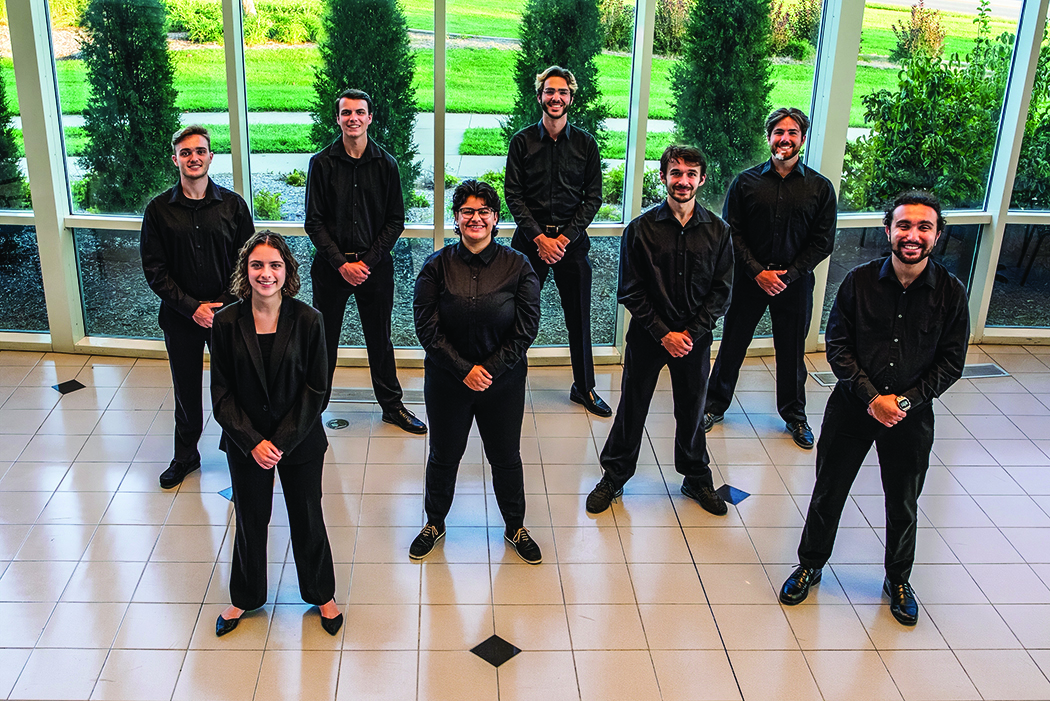
Percussion, Piano
Department of Music Faculty
